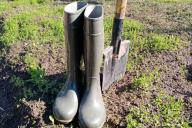You need to be able to read the signals that the seedlings send to the gardener. This way you can get your bearings in time and apply fertilizer that may save the future harvest.
We will tell you in what case you need to add iodine and how to understand that it is iodine that the seedlings are asking the gardener for.
Signs of iodine deficiency
First of all, pale leaves of plants should alert you. At the same time, stems can stretch out (but it is important not to confuse this with a lack of sunlight). At the same time, plants can get sick and wither. If you do not add iodine, then in the long term, the seedlings may die.
What crops to feed
Tomatoes, peppers, cucumbers and cabbage, as well as strawberry bushes, respond positively to iodine supplements.
Iodine is essential for:

- intensive growth and earlier flowering;
- protecting seedlings from fungal diseases and pests, fertilizing reduces the risk of late blight and rot development by 80%;
- increasing the quantity and quality of fruits and strengthening the immunity of plants.
In addition, iodine can be used to stop stems from stretching and leaves from turning yellow.
How to feed
1. Root feeding simultaneously disinfects the soil. The working solution is prepared from 3 drops of iodine per 10 liters of water. It is applied after the first leaves appear on the seedlings.
2. Foliar feeding protects plants from fungus and pest attacks. To prepare the solution, add 1 drop of iodine to 3 liters of water.








